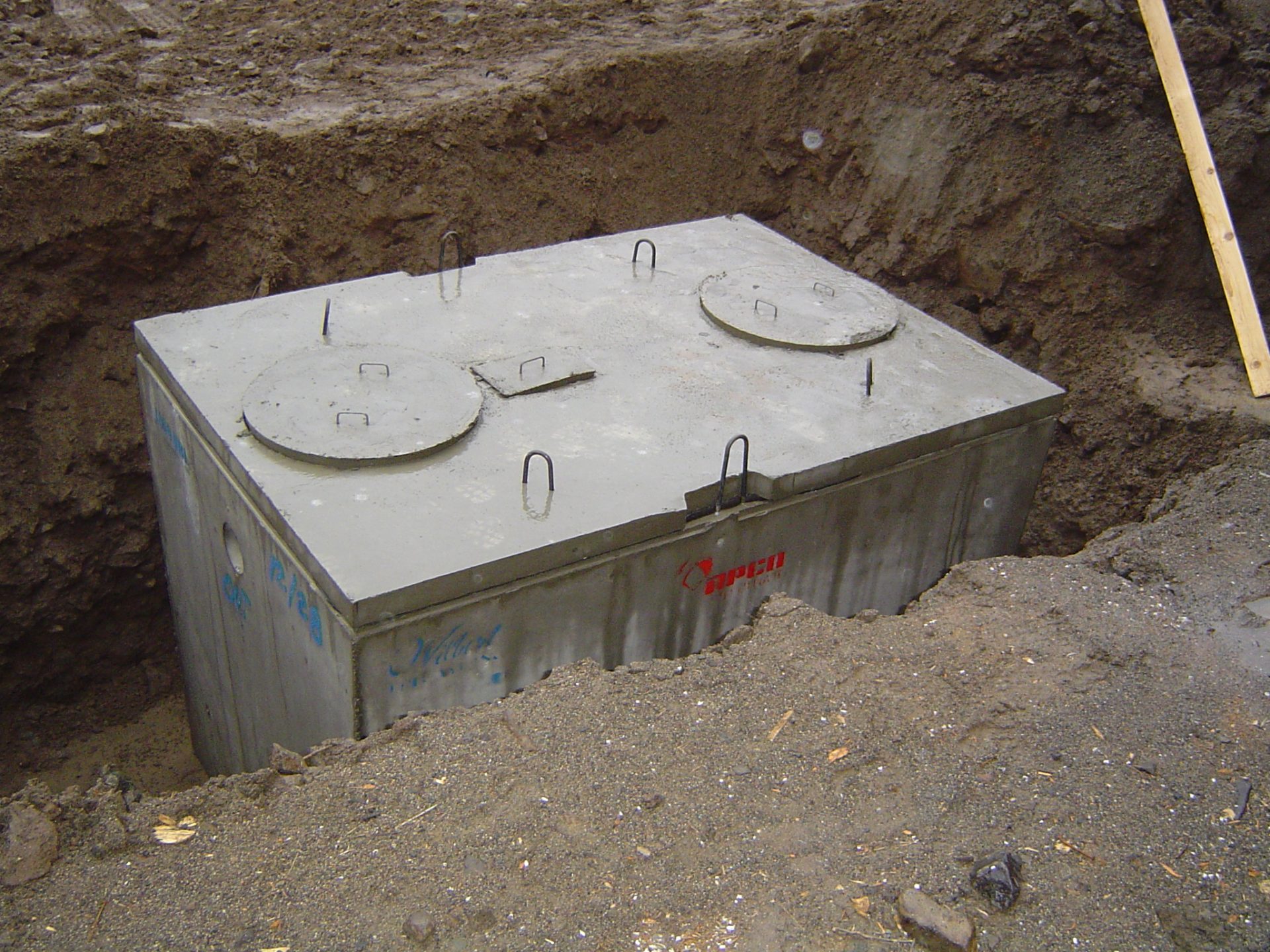Septic tanks are a vital component of wastewater management in properties that aren’t connected municipal sewer systems. Precast and concrete are the two primary options homeowners have the option of choosing between when choosing a septic system. Both of them have unique advantages and considerations, and understanding the differences between the two can help property owners make educated decisions regarding sustainable wastewater management.
Septic tanks, also known as underground chambers, are used to collect processes, distributes, and collect water from residential and commercial properties. They are a critical part of the wastewater treatment process which allows the safe treatment of wastewater while safeguarding the environment and health of the population.

Which septic tank is best for You: Concrete or Precast?
Due to their strength the concrete septic tank has been popular for many years. Constructed on-site using poured concrete they are well-known for their strength and ability to stand the test time. But, the process of installation for concrete tanks is labor-intensive and time-consuming.
On the other hand, precast septic tanks are made on-site, and then delivered to the property ready to be installed. The tanks are constructed in controlled environments, ensuring consistent quality and structural integrity. Precast tanks are easy to install and have lower expenses for labor.
Homeowners looking to upgrade or replace their septic tanks be pleased to know that precast tanks offer numerous benefits. Precast tanks are produced in accordance with strict quality standards. This gives property owners peace of mind. The effective installation process cuts down the duration of projects and helps minimize disruptions to the property.
How to keep your concrete septic tanks to ensure long-term durability
Concrete septic tanks can last, but they require regular maintenance to keep them in good condition. Regular inspections and pumps are crucial to prevent issues such as clogging and structural damage. To avoid damage to the septic tank, homeowners must be aware of the materials and chemicals that they introduce into the system.
Environmental factors are considered in the design of a precast septic tanks. These tanks are made by using sustainable practices, which reduce the use of energy and resources. Precast tanks last and are long lasting, which reduces the environmental impact of these tanks.
Property owners should take into consideration the specific needs of their property and its characteristics when deciding whether or not to install the septic system. The soil type, property size, and local regulations could affect the decision between concrete or precast tanks. A consultation with experienced experts will help property owners make educated decisions based on their specific requirements. Click here Septic tanks for sale near me
The role of septic Tanks in Sustainable Wastewater Management
Septic tanks are a crucial component of sustainable wastewater management. They allow you to process and dispose of household effluent. Septic tanks that are well maintained can help safeguard groundwater and surface waters and also preserving the local ecosystems.
It is essential to select the appropriate size septic system to avoid over-stressing the system and to ensure that it is effective in wastewater treatment. Considerations like the size of your property along with water usage and the number of people living there should be considered when determining the proper tank size. Proper sizing is crucial for the proper treatment and removal of waste.
Modern manufacturing techniques employed in the creation of precast septic tank solutions provide reliable, high-quality solutions for efficient wastewater treatment. The tanks are constructed to meet stringent industry standards and offer property owners a an affordable and reliable option for managing wastewater.
Septic tanks require routine maintenance to ensure their maximum performance and durability. The recommended maintenance schedules should be adhered to by owners of properties, which include pumping, inspection and monitoring the system. The priority of maintenance can allow property owners to avoid expensive repairs and ensure the effectiveness of their septic system.
The design of a septic tank is a critical aspect of sustainable wastewater management. Whichever option you pick, concrete or precast the system should be designed to satisfy the requirements of your property as well as ensure efficient treatment and disposal. Professional design and installation can help the property owner construct reliable and functional septic tanks.
The Environmental and Economic Impact of Upgrading to a Precast Septic Tank System
Precast septic tanks that are upgraded could be beneficial to the environment as well as owners of properties. Precast tanks are more affordable due to the fact that they take less time to construct and have lower labor costs. Precast tanks are environmentally friendly. tank are also a benefit to sustainable wastewater management.
The best septic system is essential for property owners seeking sustainable solutions for the management of wastewater. When choosing precast or concrete homeowners must take into consideration the durability of the system, its efficiency, long-term maintenance, and environmental impact. Property owners can make informed choices to ensure that their septic tanks continue to work efficiently and effectively for many years.